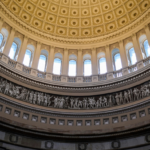California Wildfire Legal Response: Executive Orders, CEQA Exemptions, and Rebuilding Guidelines

California Wildfire Legal Response: Executive Orders, CEQA Exemptions, and Rebuilding Guidelines
The Los Angeles and Ventura County wildfires are, first and foremost, a human tragedy, displacing families, devastating communities and upending lives. But in addition, the physical destruction they’ve caused has created multifaceted legal challenges for California attorneys to navigate as property owners begin the long road to recovery. More than 16,000 structures have been destroyed, resulting in billions of dollars of estimated damage.
Swift governmental action has followed, aimed at cutting through regulatory hurdles and expediting rebuilding efforts. Here’s what to know about evolving state and local regulations in California as you advise clients on rebuilding, including the executive orders, exemptions and pending legislation for fire-affected areas.
Executive orders
California Gov. Gavin Newsom has used emergency powers to cut through some bureaucratic red tape, issuing multiple executive orders designed to expedite recovery efforts in the LA region that address debris removal, price gouging, temporary housing, obstacles to rebuilding and other critical post-disaster issues.
N-4-25
One key element of these efforts is Executive Order (EO) N-4-25, which exempts projects from environmental regulations under the California Environmental Quality Act (CEQA) and the Coastal Act if they are aimed at repairing or rebuilding structures that were substantially damaged or destroyed. Issued while the fires were still burning, this order was aimed at helping people get back into their homes as soon as possible. However, it has triggered debates over whether expediting recovery should come at the cost of thorough environmental oversight.
N-20-25
EO N-20-25 followed soon after, providing unprecedented flexibility for property owners looking to rebuild. This order expanded the preliminary information in EO N-4-25 and clarified which projects qualify for exemptions.
These exemptions are not automatic and come with specific conditions. Property owners must carefully assess whether their plans meet these parameters to take advantage of the regulatory relief.
Applicable projects include:
- Primary and accessory structures: These must be rebuilt in the same location and cannot exceed 110% of the original structure’s footprint and height.
- New accessory dwelling units (ADUs): These must be at least 10 feet from a canyon bluff and 25 feet from a coastal bluff to be added to a property that was substantially damaged or destroyed.
- Supportive infrastructure: This includes foundation systems, utilities and driveways necessary to build and install structures.
N-14-25
EO N-14-25 aimed to clarify procedures and prevent delays caused by conflicting interpretations of existing laws. The governor’s order explicitly:
- Suspends all Coastal Act statutory exemption criteria and procedures for rebuild projects
- Directs the Coastal Commission to avoid taking any action that interferes with swift rebuilding
- Temporarily relaxed tenant-protection statutes that might discourage hotels, motels and short-term rentals from offering accommodations beyond 30 days
The permitting process
The permitting process has been streamlined to facilitate faster rebuilding of structures destroyed by the wildfires. Under state law, buildings constructed in compliance with the 2019 California Building Code (CBC) don’t need additional plan review if rebuilt to the same specifications. However, local enforcement agencies still have discretion over whether further review is necessary, and the 2022 CBC evaluation standards still apply.
Also, coastal development permits have been suspended for certain temporary and permanent housing. This includes establishing, repairing and operating mobile homes and special occupancy parks, mobile homes, manufactured homes and RVs on private property.
The city of Los Angeles has complemented state efforts with its own executive order, introducing more streamlined approaches. Mayor Karen Bass’ order includes expedited permit review, elimination of discretionary review processes and a seven-year window for obtaining repair or reconstruction permits.
Local agency authority and implementation
One critical aspect of these orders is that the local agencies issuing development and building permits are the “sole agencies” for deciding whether a property or facility is eligible for the exemptions. That means their determinations are not appealable to the Coastal Commission or any state agency.
Local jurisdictions are able (but not required) to create their own guidance for implementing the orders, so be sure to monitor affected jurisdictions such as the city of Los Angeles, Los Angeles County, Malibu and Pasadena.
Emerging developments
As cleanup efforts continue, expect new and amended executive orders, legislation, funding and local guidance. Updates to LA’s fire hazard maps are expected in May, and government agencies are working to create more robust frameworks for future disaster response.
Pending legislation to watch
With over 30 wildfire-related bills introduced at the state level, there is plenty of legislative activity that could impact rebuilding efforts and future wildfire mitigation strategies. Key legislation includes:
- Senate Bill 375: Establishes a framework for local agencies to submit wildfire preparedness plans that prioritize vegetation management while protecting endangered species within fire hazard severity zones
- SB 252 (Powerline Safety Act): Exempts undergrounding of power lines from CEQA requirements to reduce wildfire risks caused by power equipment failures
- Assembly Bill 300: Requires the state fire marshal to review and update fire hazard severity zone classifications every five years
- AB 818: Would modify the Permit Streamlining Act to require agencies to approve or disapprove rebuilding applications within 45 days
- AB 295: Extends environmental leadership development project provisions to include water storage, conveyance and groundwater recharge projects
Challenges on the horizon
Despite these promising developments, significant challenges remain. Local agencies face staffing shortages, debris removal is estimated to take up to 18 months, and there are concerns about potential population shifts. The complex interplay between state and local mandates continues to create uncertainty for property owners and developers. Navigating this landscape requires patience, preparedness and strategic thinking.
Attorneys advising clients affected by the wildfires should:
- Monitor local agency websites for implementation guidance and expedited permitting procedures.
- Familiarize yourself with the specific requirements for exemption eligibility under both state and local orders.
- Be prepared for a fluid regulatory environment as additional executive orders and legislation are likely.
- Consider how the upcoming revisions to fire hazard maps could impact rebuilding requirements.
- Watch for potential conflicts between local implementation and state mandates.
The regulatory response to the LA and Ventura County wildfires reflects the urgency of rebuilding in a state already facing a severe housing crisis. While the exemptions from CEQA and Coastal Act requirements represent significant streamlining, be prepared for continued evolution.
As California adapts to increasing wildfire risks, expect to see more permanent changes to land use regulations in high fire severity zones. Attorneys practicing in this area will need to stay vigilant as some of these emergency measures transition into long-term policy changes.
This blog post summarizes key points from a recent CEB webinar, “CEQA Suspension: 5 Key Interim Measures,” featuring Sheppard Mullin partners Lauren Chang and Whitney Hodges. For a more detailed discussion, the webinar recording is available at ceb.com/webinars.
For more insights into CEQA exemptions and other California land use issues, schedule a free demo with CEB.
Read more related content
- California’s Proposed Antitrust Crackdown: SB 763 Penalties Could Jump from $1 Million to $100 MillionCalifornia’s Proposed Antitrust Crackdown: SB 763 Penalties Could Jump from $1 Million to $100 Million A $1 million penalty for California corporations found guilty of criminal antitrust charges could soon … Continued
- California Wildfire Legal Response: Executive Orders, CEQA Exemptions, and Rebuilding GuidelinesCalifornia Wildfire Legal Response: Executive Orders, CEQA Exemptions, and Rebuilding Guidelines The Los Angeles and Ventura County wildfires are, first and foremost, a human tragedy, displacing families, devastating communities and … Continued
- Navigating the Litigation Process in California: A Practitioner’s Handbook Litigation in California can be a complex and time-intensive process, requiring legal practitioners to have a thorough understanding of procedural rules, case law, and effective legal strategies. Whether representing plaintiffs … Continued



